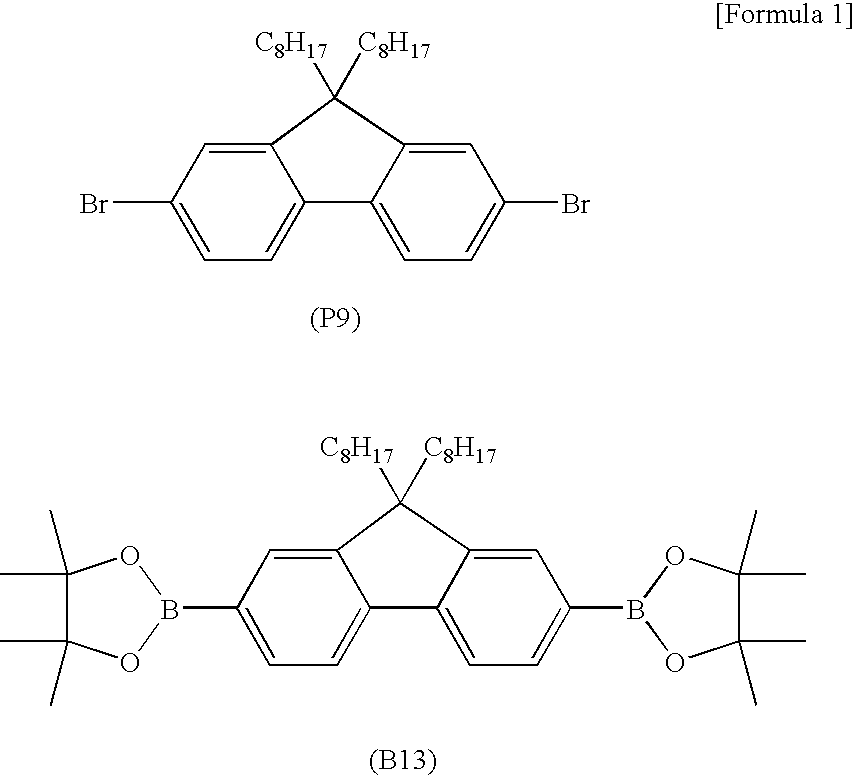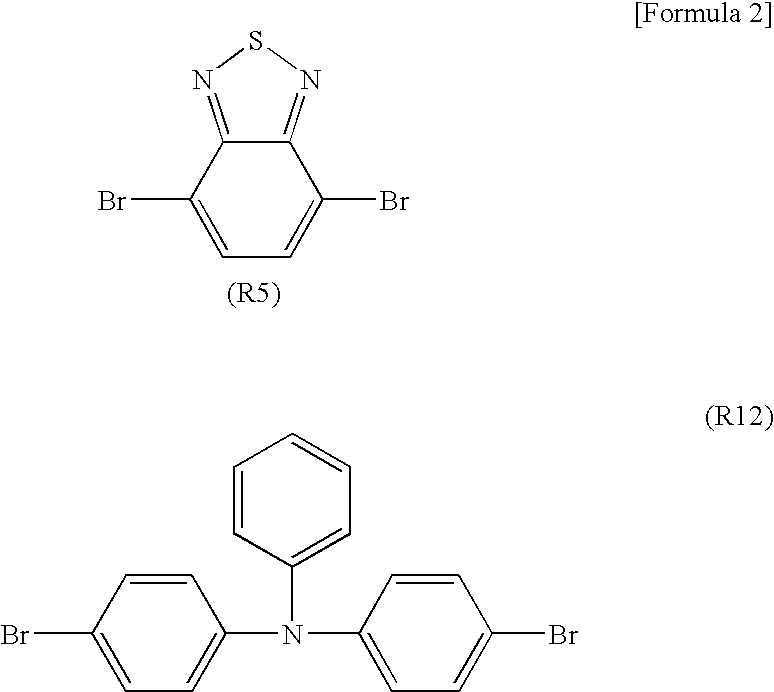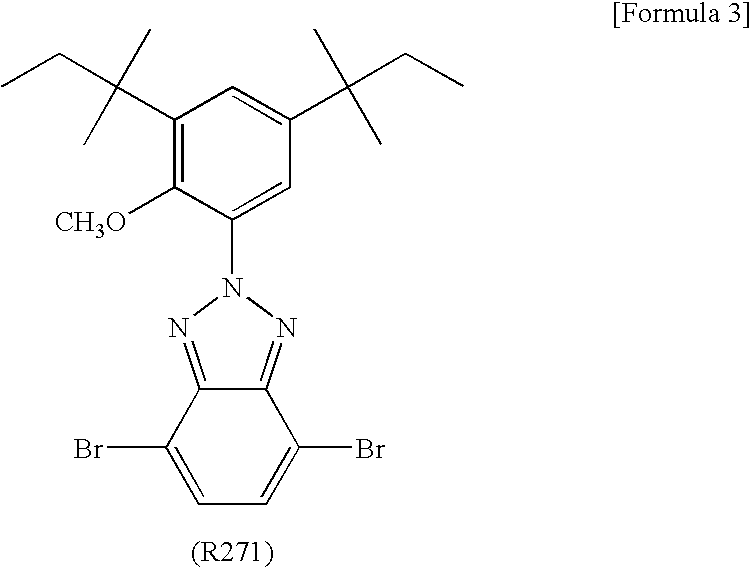Process for producing conjugated polymer
a technology of conjugated polymer and process, which is applied in the direction of chemistry apparatus and processes, solid-state devices, and light-emitting compositions, etc., can solve the problems of discoloration of polymer products and decomposition of catalysts, and achieve superior properties and productivity, shorten reaction time, and improve the effect of efficiency
- Summary
- Abstract
- Description
- Claims
- Application Information
AI Technical Summary
Benefits of technology
Problems solved by technology
Method used
Image
Examples
examples
[0054]A more detailed description of the present invention is presented below using a series of examples, but the present invention is in no way limited by the following examples.
examples 1 to 16
Polymer Synthesis (1)
[0055]Reaction was conducted using a special-purpose polytetrafluoroethylene reaction vessel. The solvent was subjected to a treatment in which nitrogen gas was bubbled through the solvent for at least 30 minutes to remove oxygen prior to use. The reaction vessel was charged with 2,7-dibromo-9,9-dioctylfluorene (P9) (0.4 mmol) and the diboronate ester of 9,9-dioctylfluorene (B13) (0.4 mmol), and with the vessel placed in a glove box under an atmosphere of nitrogen, a 3 vol % toluene or anisole solution of tricaprylmethylammonium chloride (8 ml, see Table 1) and a 8 mM toluene or anisole solution of Pd(PPh3)4 (see Table 1) were then added to the vessel, thus yielding a mixture. Following stirring of the mixture to dissolve the monomers, a 2M aqueous base (5.3 ml, see Table 1) was added. The reaction vessel was then mounted in a microwave irradiation apparatus, and with the reaction mixture undergoing constant stirring, a Suzuki coupling reaction was conducted und...
examples 17 to 24
Polymer Synthesis (2)
[0057]Reaction was conducted using a special-purpose polytetrafluoroethylene reaction vessel. The solvent was subjected to a treatment in which nitrogen gas was bubbled through the solvent for at least 30 minutes to remove oxygen prior to use. The reaction vessel was charged with 4,7-dibromo-2,1,3-benzothiazole (R5) (0.08 mmol), 4,4′-dibromotriphenylamine (R12) (0.32 mmol) and the diboronate ester of 9,9-dioctylfluorene (B13) (0.4 mmol), and with the vessel placed in a glove box under an atmosphere of nitrogen, a 3 vol % toluene or anisole solution of tricaprylmethylammonium chloride (8 ml, see Table 4) and a 8 mM toluene or anisole solution of Pd(PPh3)4 (see Table 4) were then added to the vessel, thus yielding a mixture. Following stirring of the mixture to dissolve the monomers, a 2M aqueous solution of K2CO3 (5.3 ml) was added. The reaction vessel was then mounted in a microwave irradiation apparatus, and with the reaction mixture undergoing constant stirrin...
PUM
| Property | Measurement | Unit |
|---|---|---|
| time | aaaaa | aaaaa |
| frequency | aaaaa | aaaaa |
| frequency | aaaaa | aaaaa |
Abstract
Description
Claims
Application Information
 Login to View More
Login to View More - R&D
- Intellectual Property
- Life Sciences
- Materials
- Tech Scout
- Unparalleled Data Quality
- Higher Quality Content
- 60% Fewer Hallucinations
Browse by: Latest US Patents, China's latest patents, Technical Efficacy Thesaurus, Application Domain, Technology Topic, Popular Technical Reports.
© 2025 PatSnap. All rights reserved.Legal|Privacy policy|Modern Slavery Act Transparency Statement|Sitemap|About US| Contact US: help@patsnap.com



